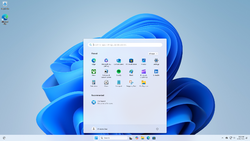
The traditional Windows desktop user interface, featuring the distinct
Start menu and
taskbarMicrosoft Windows, commonly referred to as Windows, is a family of proprietary graphical operating systems developed by Microsoft, which includes various products for different markets and industries that use a similar user interface and feature set. The original version of Windows was a graphical environment running on top of MS-DOS, although later versions increasingly took on the characteristics of a full operating system. Since Windows XP, all desktop versions of Windows use the portable NT hybrid kernel that does not rely on MS-DOS.
The Windows family currently encompasses the main consumer version named simply Windows, as well as Windows Server for the server market and Windows IoT for the embedded market, although they are all based on the common desktop Windows codebase. In the past, the family also included Windows RT for ARM-based tablets, Windows Phone or Windows Mobile for smartphones, Windows Embedded Compact, or the MS-DOS based line. An internal modularization effort, Windows Core OS (also based on the NT kernel, but not based on desktop Windows), was previously in development but was eventually abandoned due to bureaucratic and technical shortcomings.
Since Windows 95, most Windows versions have used the same user interface that included the Start menu, a taskbar on the edge of the screen and a desktop, as well as overlapping or full screen windows with controls in their top right. (Full article...)